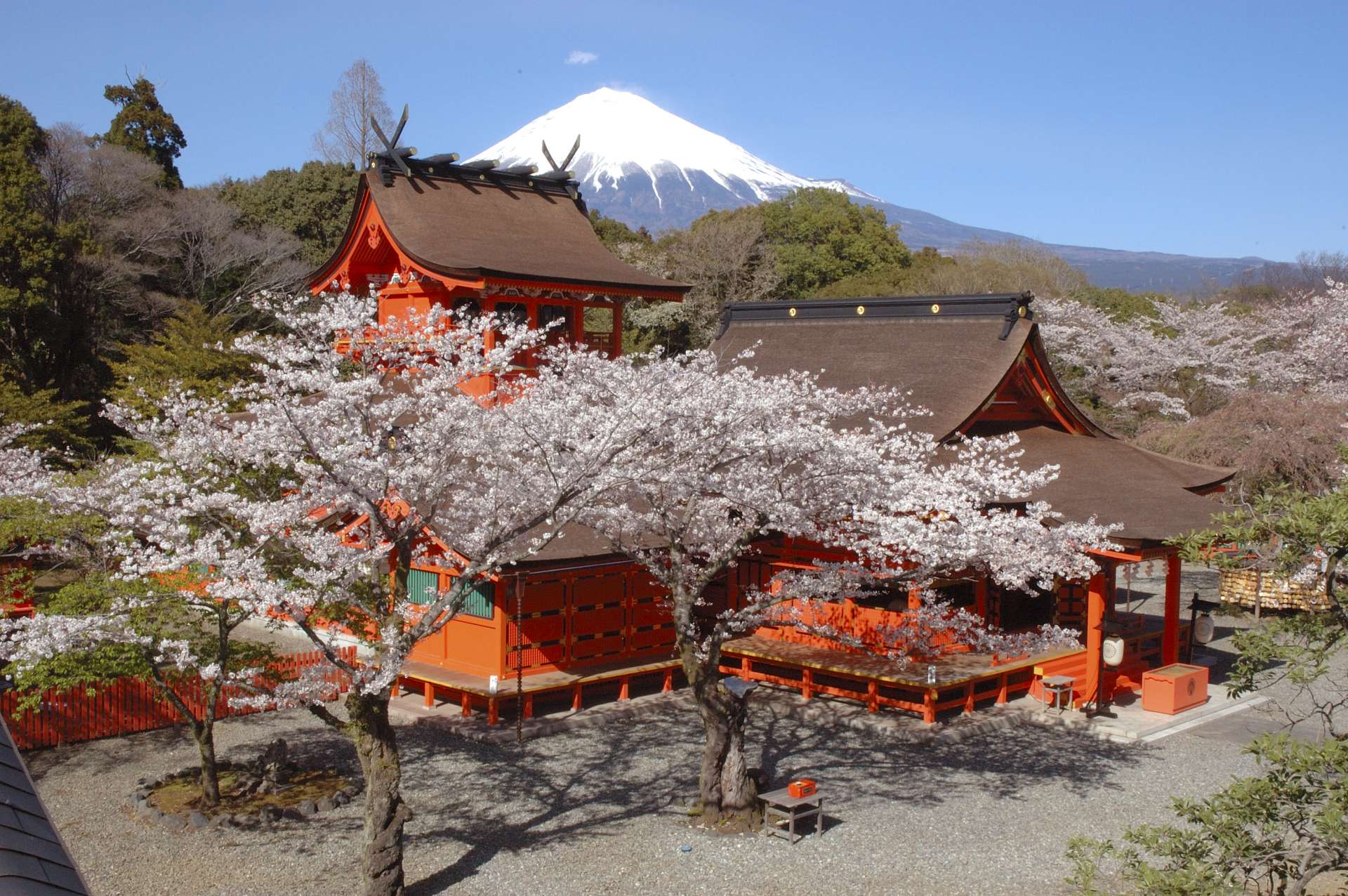富士山本宮淺間大社寬敞境內粉色櫻花綻放~喜歡來參拜,這也有不少攝影師~特地前來拍櫻花和富士山景的重要網美景點哦

Verified [Verified] denotes information that has been published with confirmation of its owing parties.
Fujisan Hongu Sengen Taisha Shrine
The central site of Mount Fuji worship, with the World Heritage site Mount Fuji as its object of worship.
Fujisan Hongu Sengen Taisha Shrine, enshrining Konohanasakuyahime-no-Mikoto, the goddess of Mount Fuji, is the head shrine of over 1,300 Sengen shrines across Japan. Its origins date back to 27 BC, with the current shrine built in 806 AD (the first year of Daido era).
The shrine's extensive grounds, about 17,000 tsubo (approx. 56,154 square meters), include several highlights: the two-story "Honden" (main hall) in a rare "Sengen-zukuri" style built in 1604 (the 9th year of Keicho era) by Tokugawa Ieyasu and designated as an Important Cultural Property of Japan, and the Romon gate, a designated Tangible Cultural Property of Shizuoka Prefecture. Additionally, there's the "Okumiya" (inner shrine) on the summit of Mount Fuji, with its annual festival held on August 15th.
Famous for its cherry blossoms, the "Sakura no Baba" area within the shrine grounds boasts over 500 cherry trees, including the "Shingen-zakura," a second-generation weeping cherry planted by the warlord Takeda Shingen himself. The best time to view these cherry blossoms is from late March to early April, attracting many visitors.
Other annual events include the Yabusame festival on May 5th and the "Fujinomiya Autumn Festival" in November.
Highlights
-
The head shrine of over 1,300 Sengen shrines nationwide.
-
The extensive grounds house the nationally important cultural property, the main hall.
-
Famous as a cherry blossom viewing spot with about 500 cherry trees in "Sakura no Baba."
Photos
-
![The shrine enshrines Konohanasakuyahime-no-Mikoto, the goddess of Mou]()
The shrine enshrines Konohanasakuyahime-no-Mikoto, the goddess of Mou
-
![The unique two-story "Sengen-zukuri" main hall is a national important cultural property.]()
The unique two-story "Sengen-zukuri" main hall is a national important cultural property.
-
![The Romon gate is a tangible cultural property of the prefecture.]()
The Romon gate is a tangible cultural property of the prefecture.
-
![Known as a famous cherry blossom spot with about 500 cherry trees in "Sakura no Baba."]()
Known as a famous cherry blossom spot with about 500 cherry trees in "Sakura no Baba."
-
![The inner shrine located at the summit of Mount Fuji.]()
The inner shrine located at the summit of Mount Fuji.
Official FAQs
Frequently Asked Questions have been vetted and answered directly by each listing.
Q
Do you have pamphlets in other languages? (If so, please also inform us of the supported languages)
Sorry, we don’t.
Q
Do you have shrine’s red ink stamps?
No, we don’t have.
Q
Is parking available?
Not available.
Q
Are coin lockers available?
Not available.
Reviews
-
Andy Huang
Details
- Name in Japanese
- 富士山本宮浅間大社
- Postal Code
- 418-0067
- Address
- 1-1 Miyacho, Fujinomiya City, Shizuoka
- Telephone
- 0544-27-2002
- Closed
- Free to walk
- Business Hours
- 5:00am - 8:00pm ※May change seasonally
- Admission
- Free
- Access
-
1) 10 minutes on foot from Fujinomiya Station on the JR Minobu Line.
2) From JR Tokaido Shinkansen Shin-Fuji Station, take the Fujikyu Shizuoka bus, get off at the "Wakutama Ike" bus stop, and it's immediately nearby. - Official Website
- Official Website (English)





